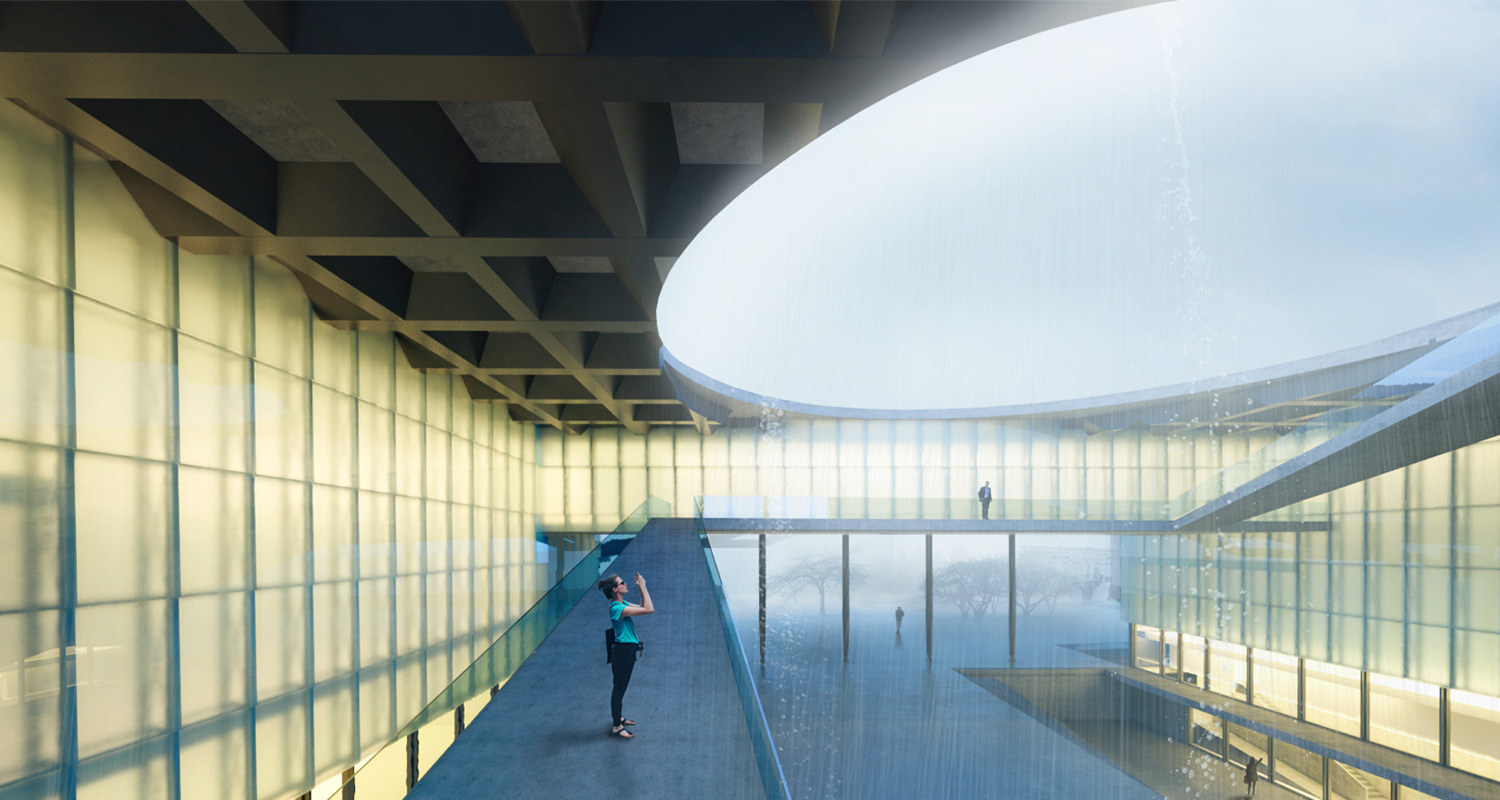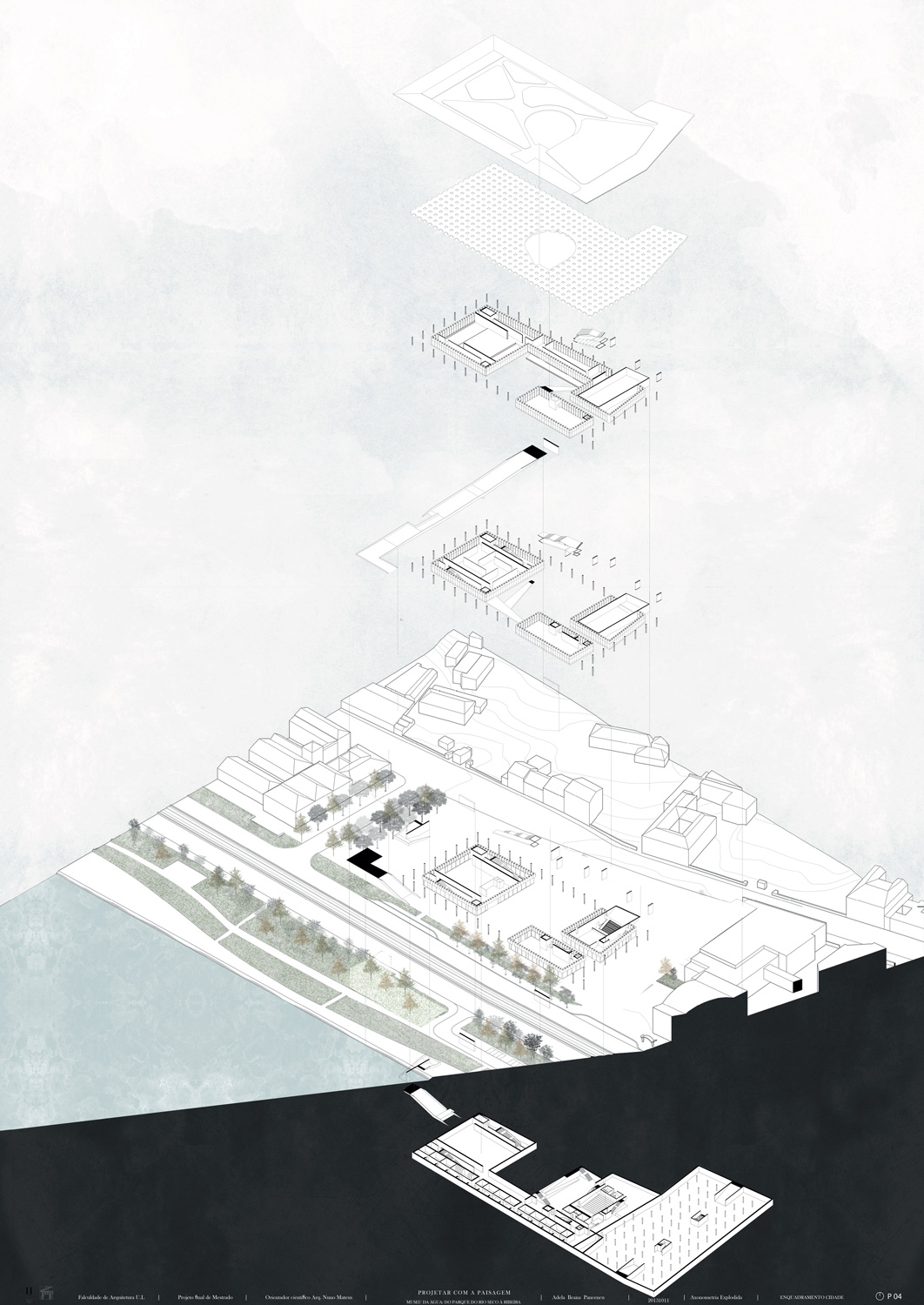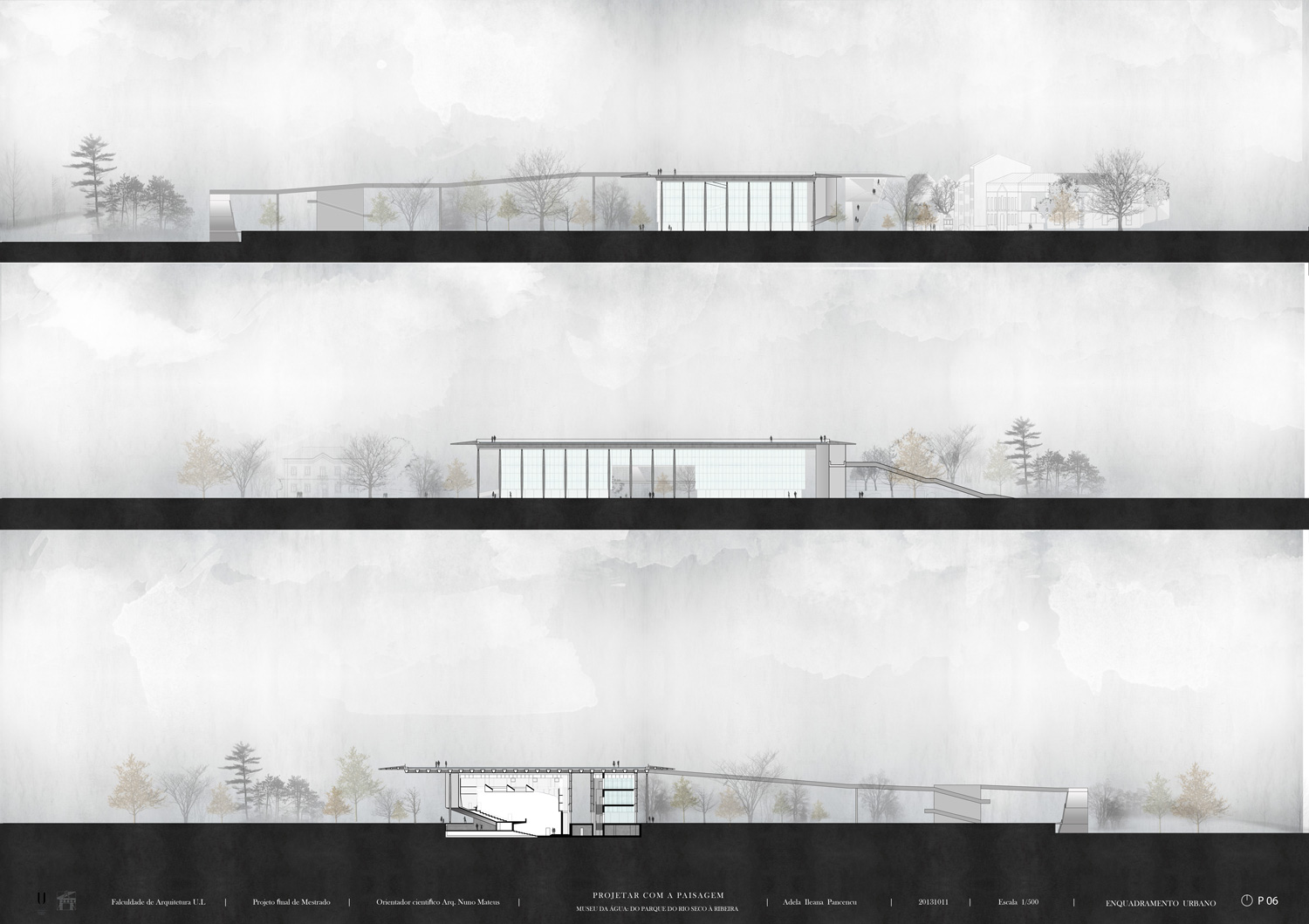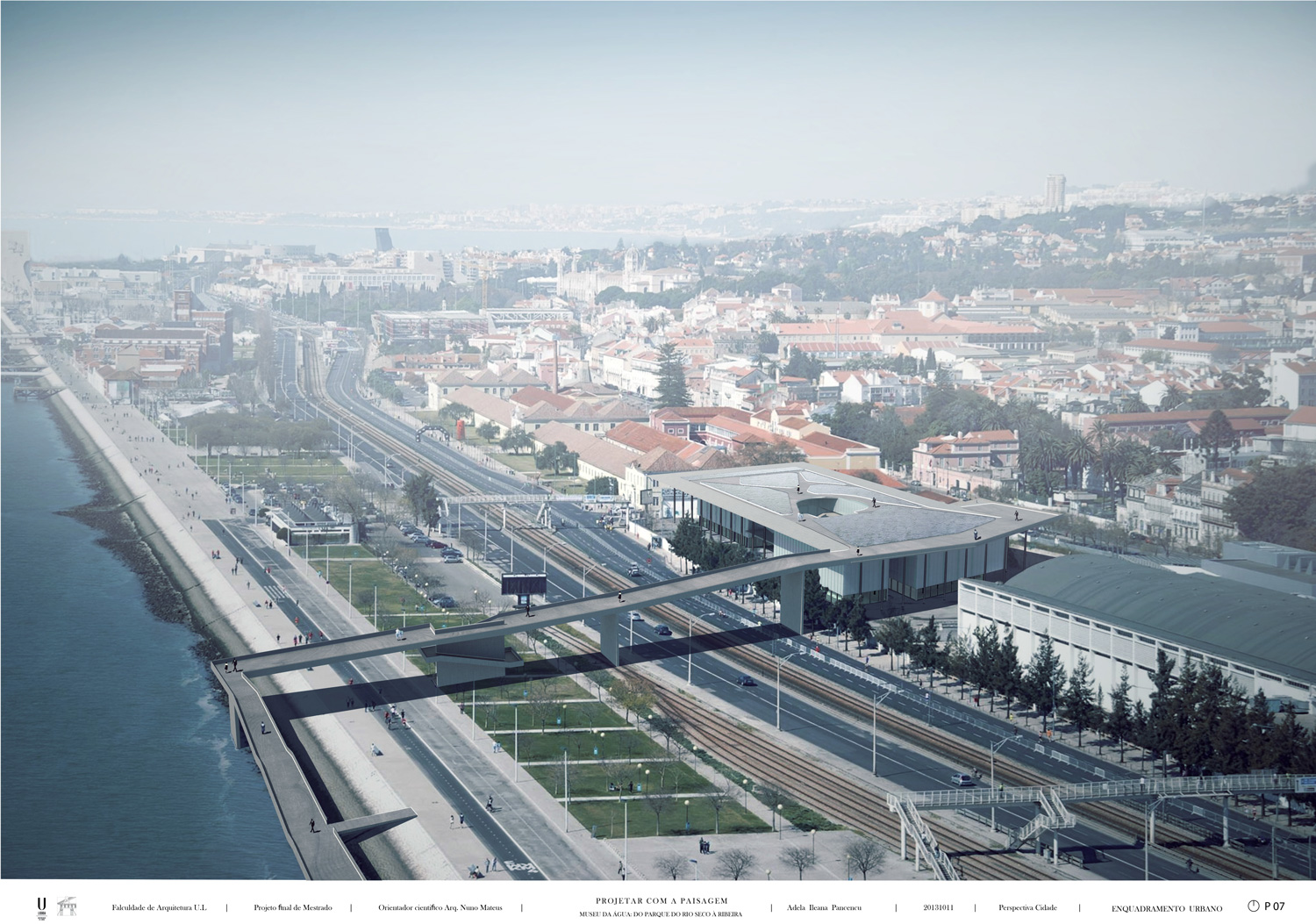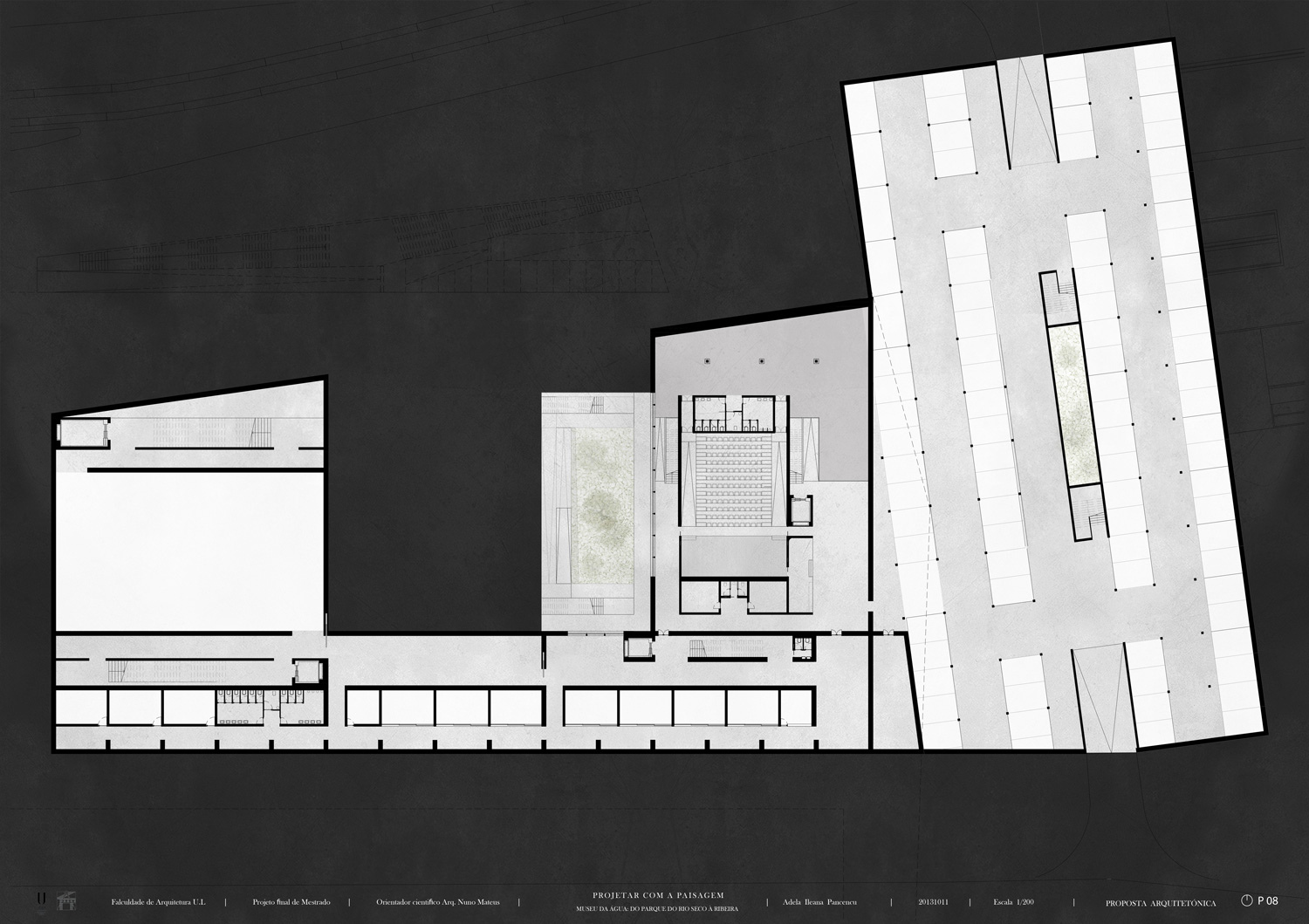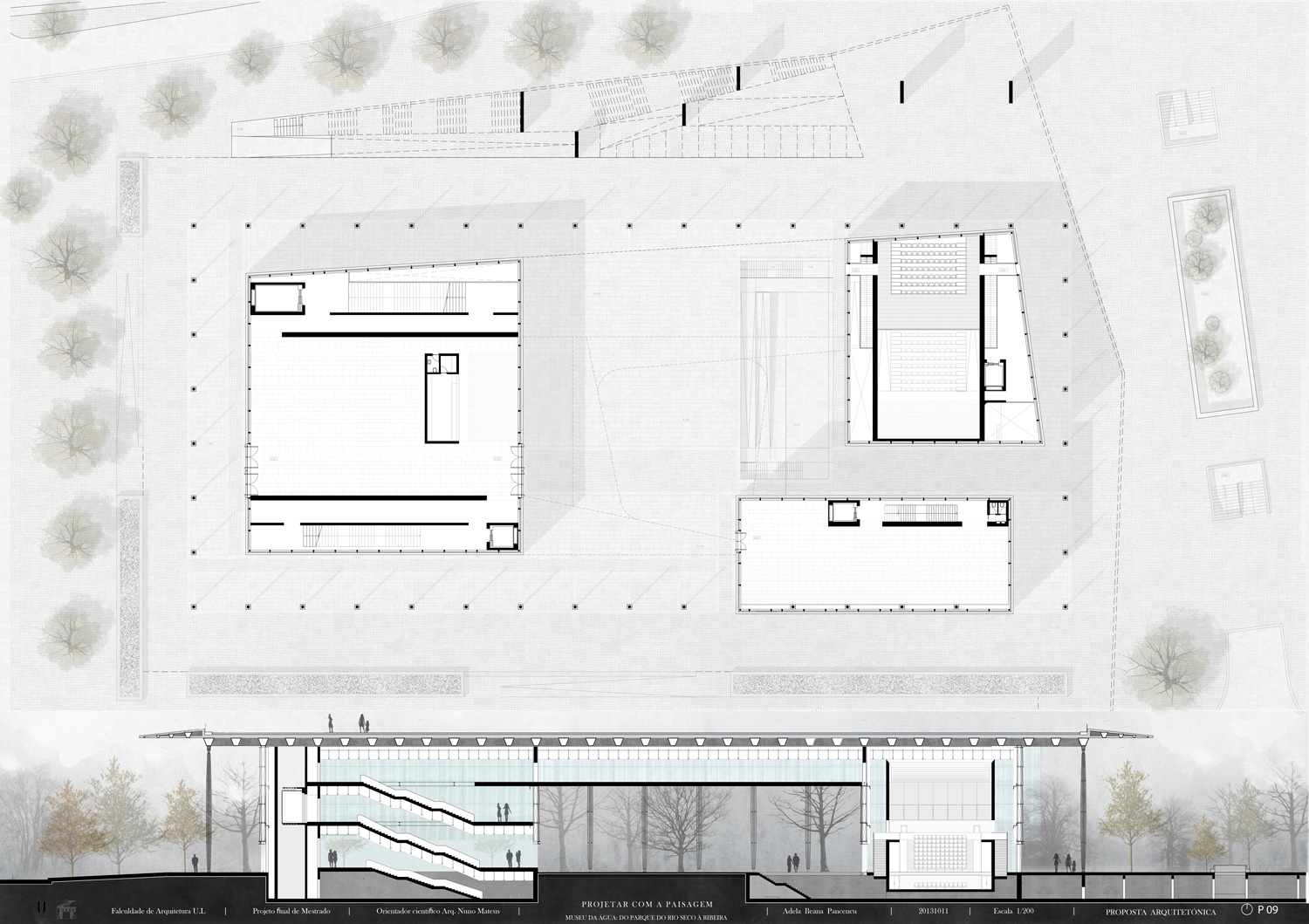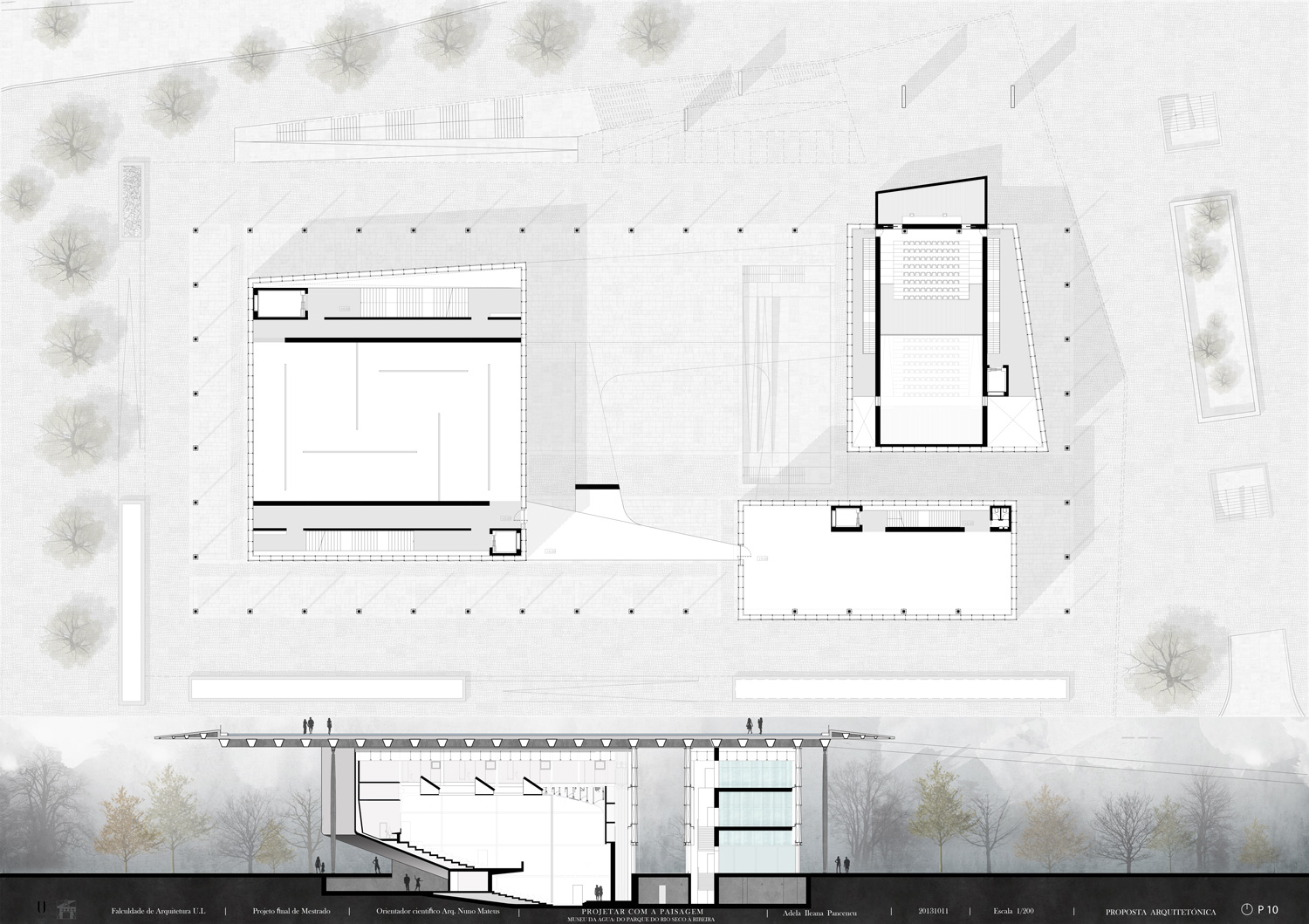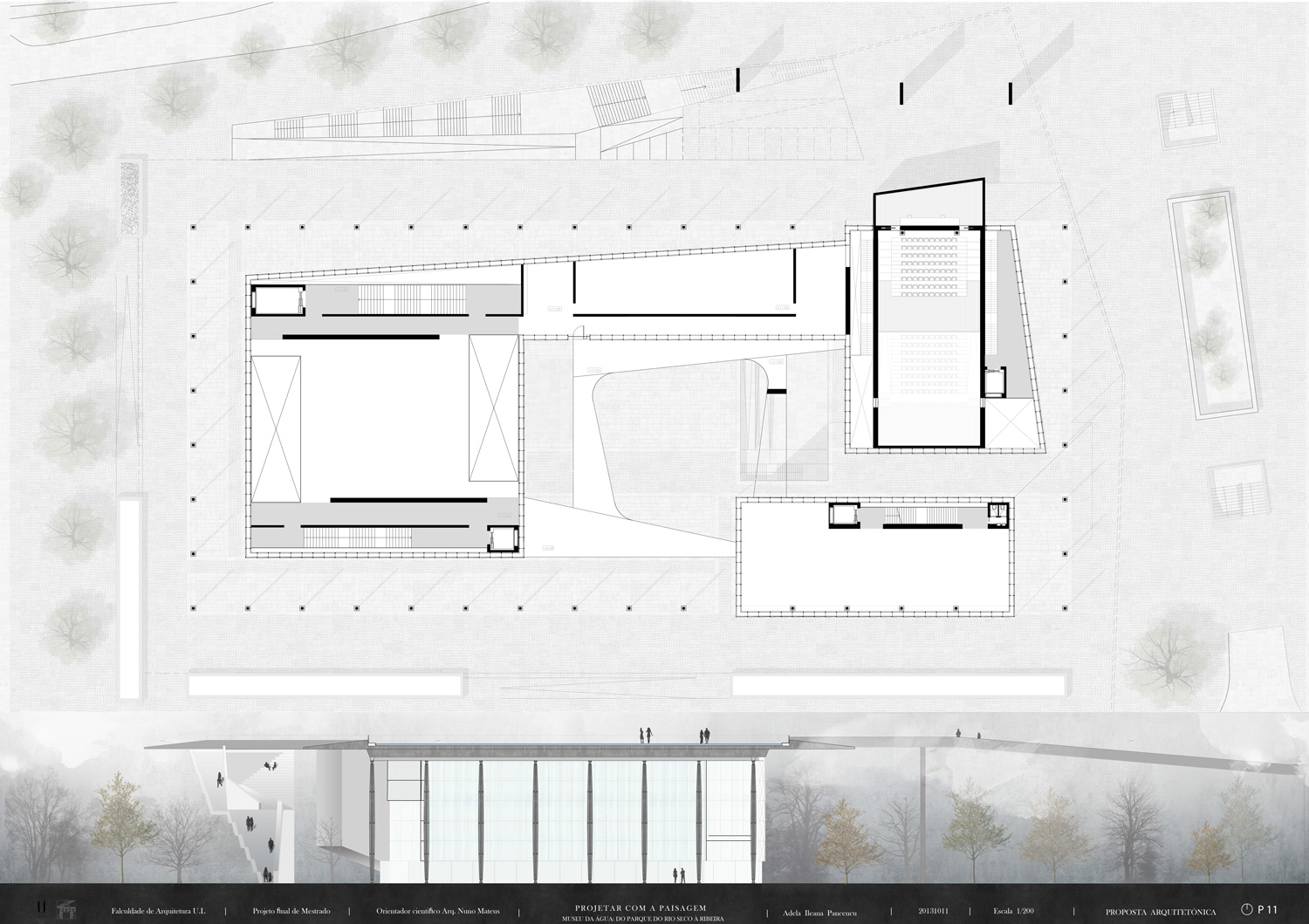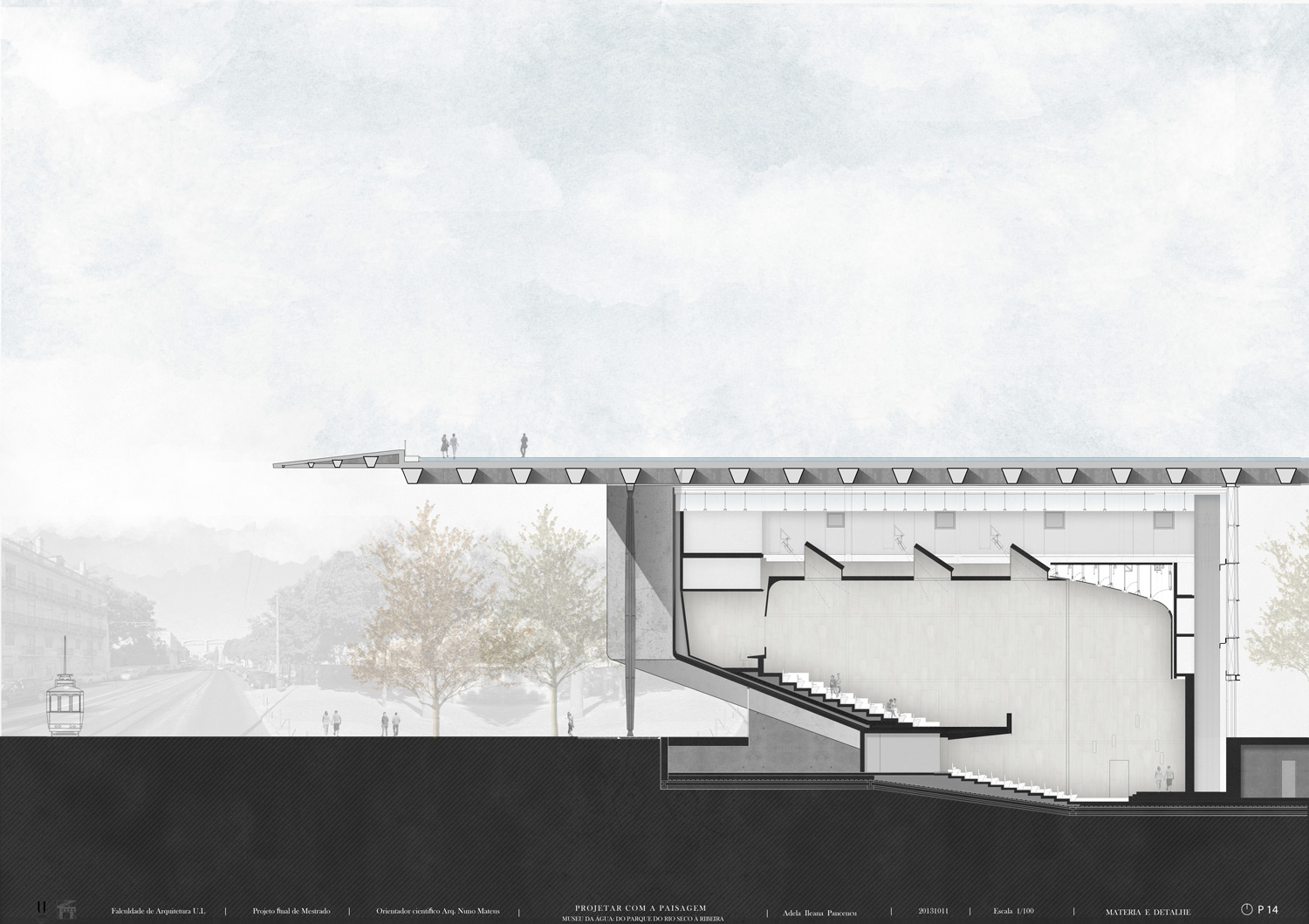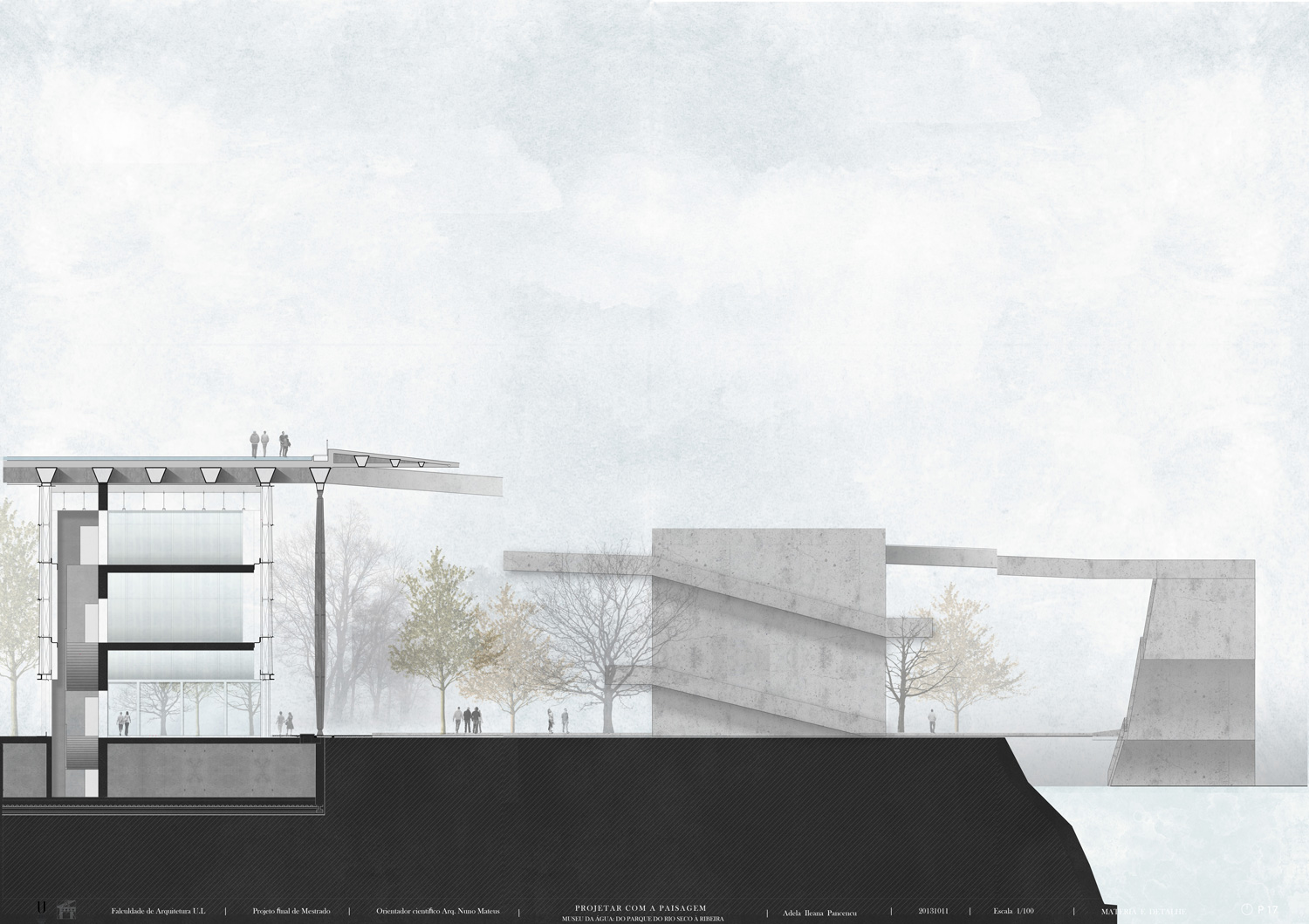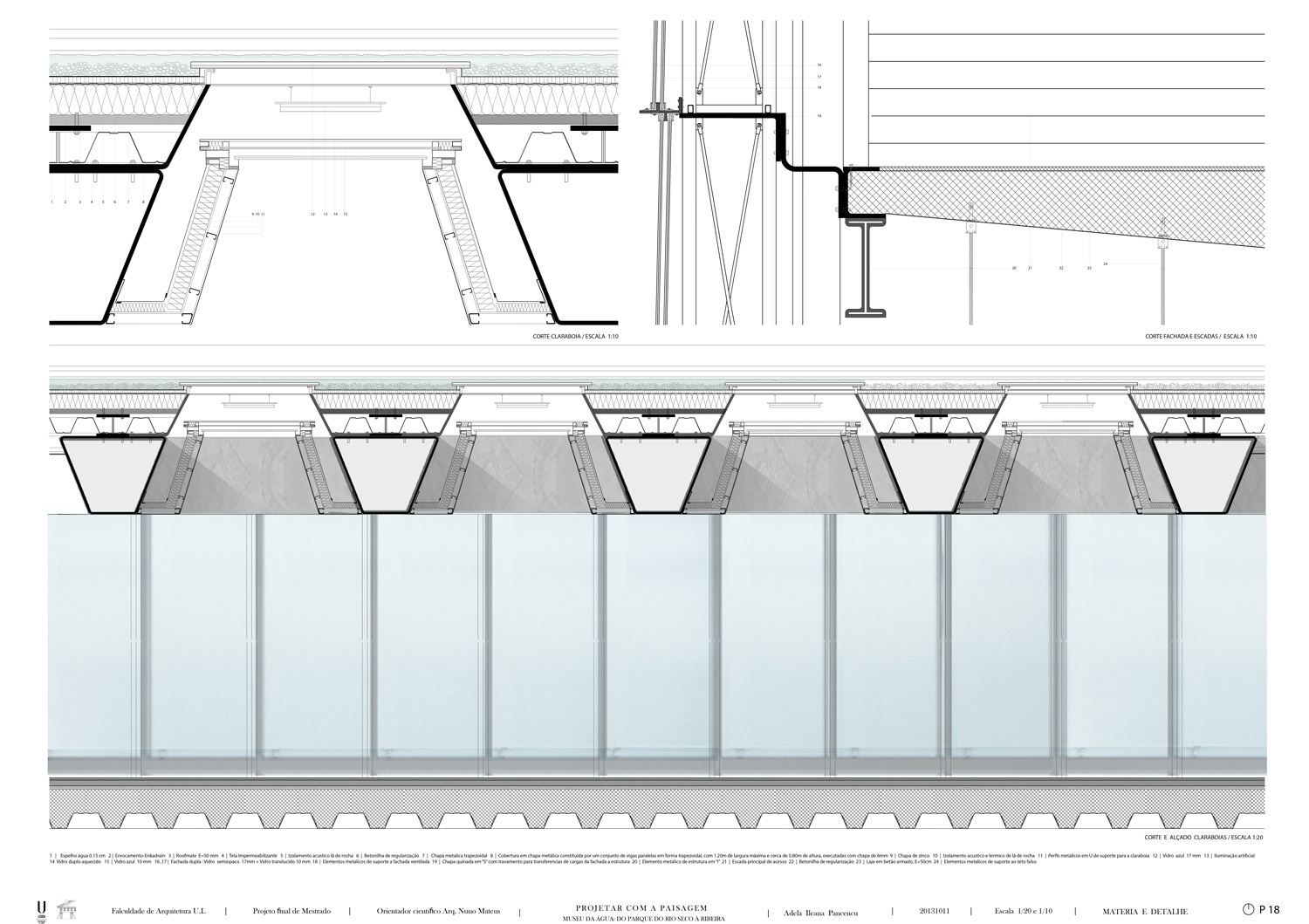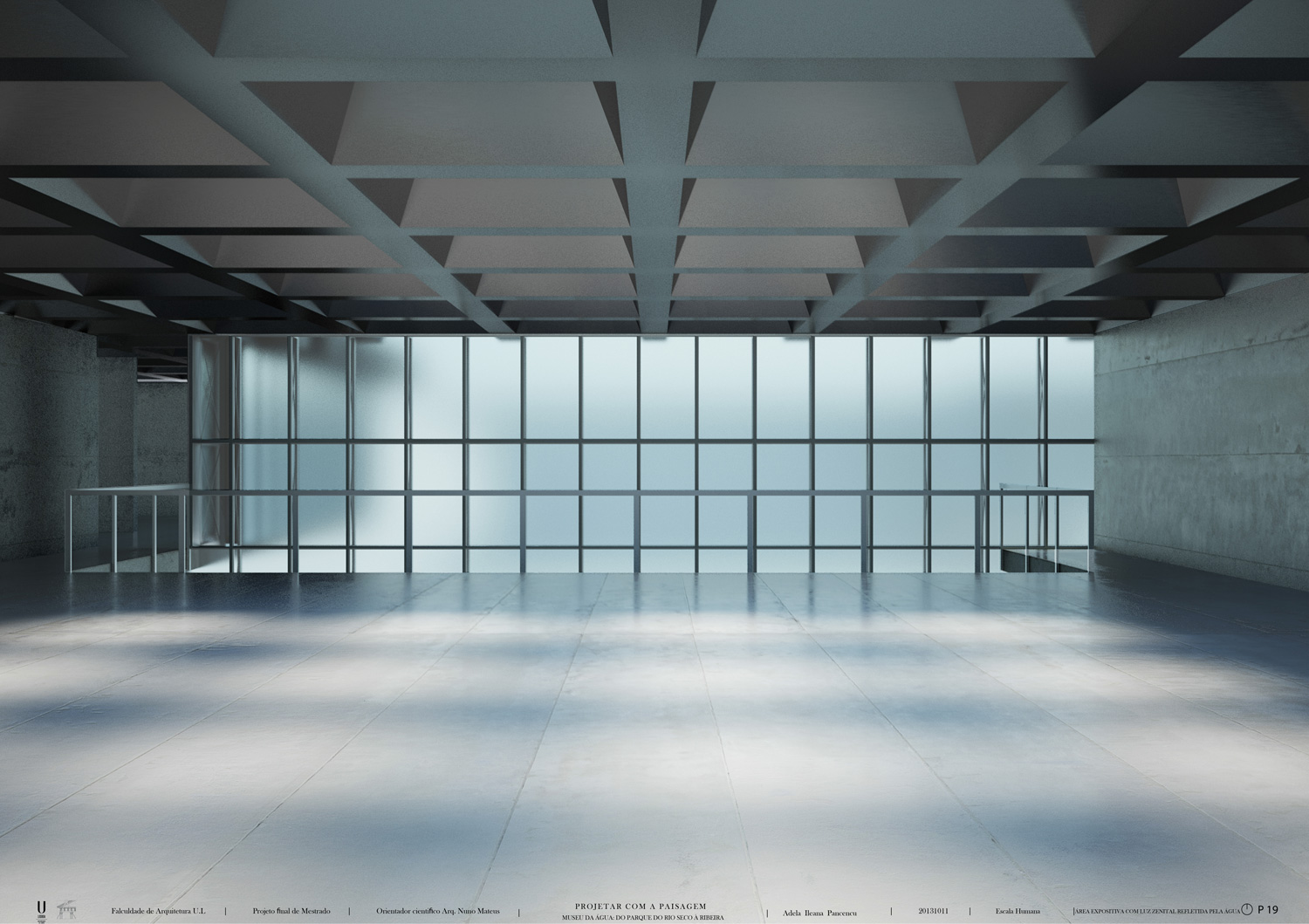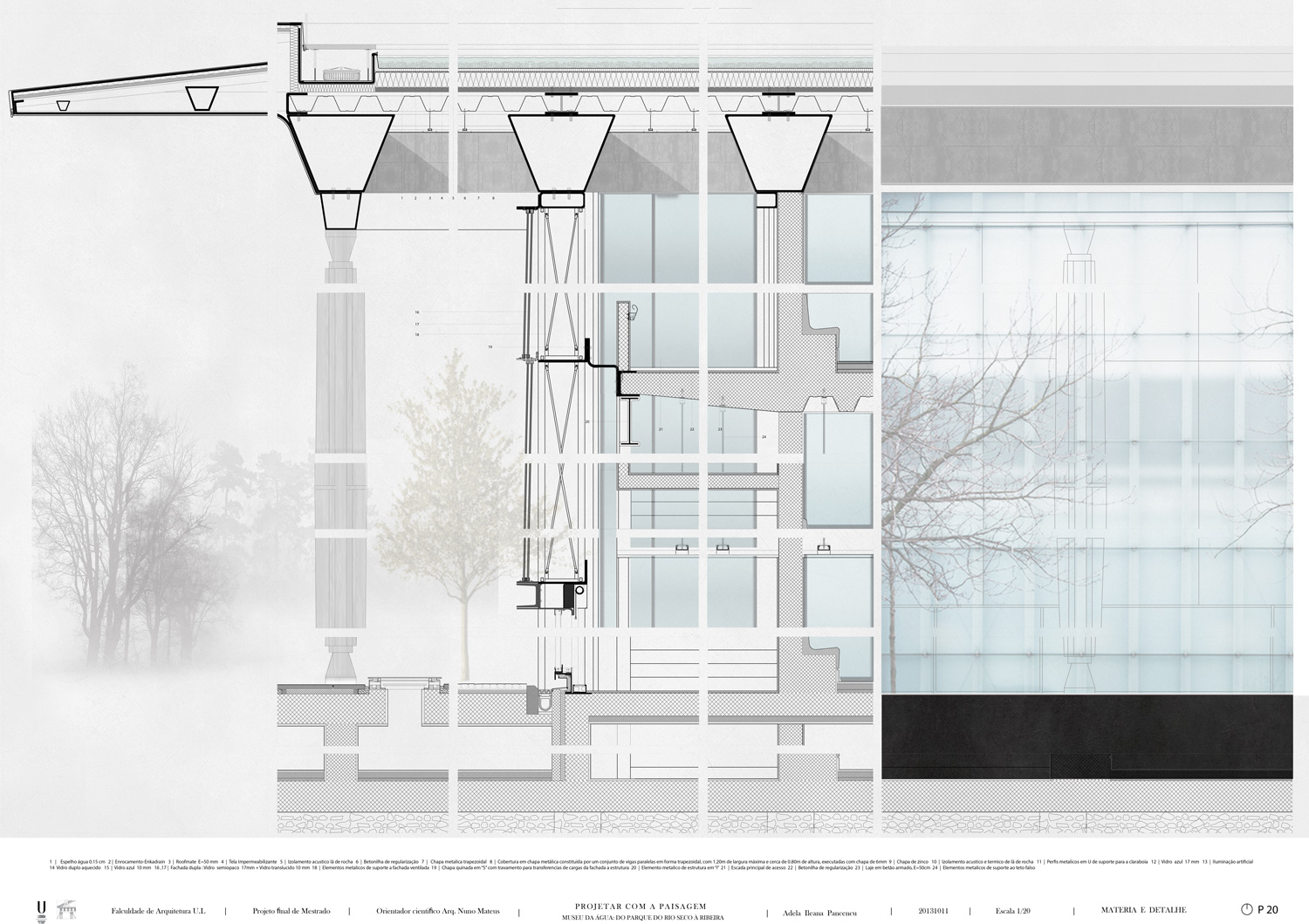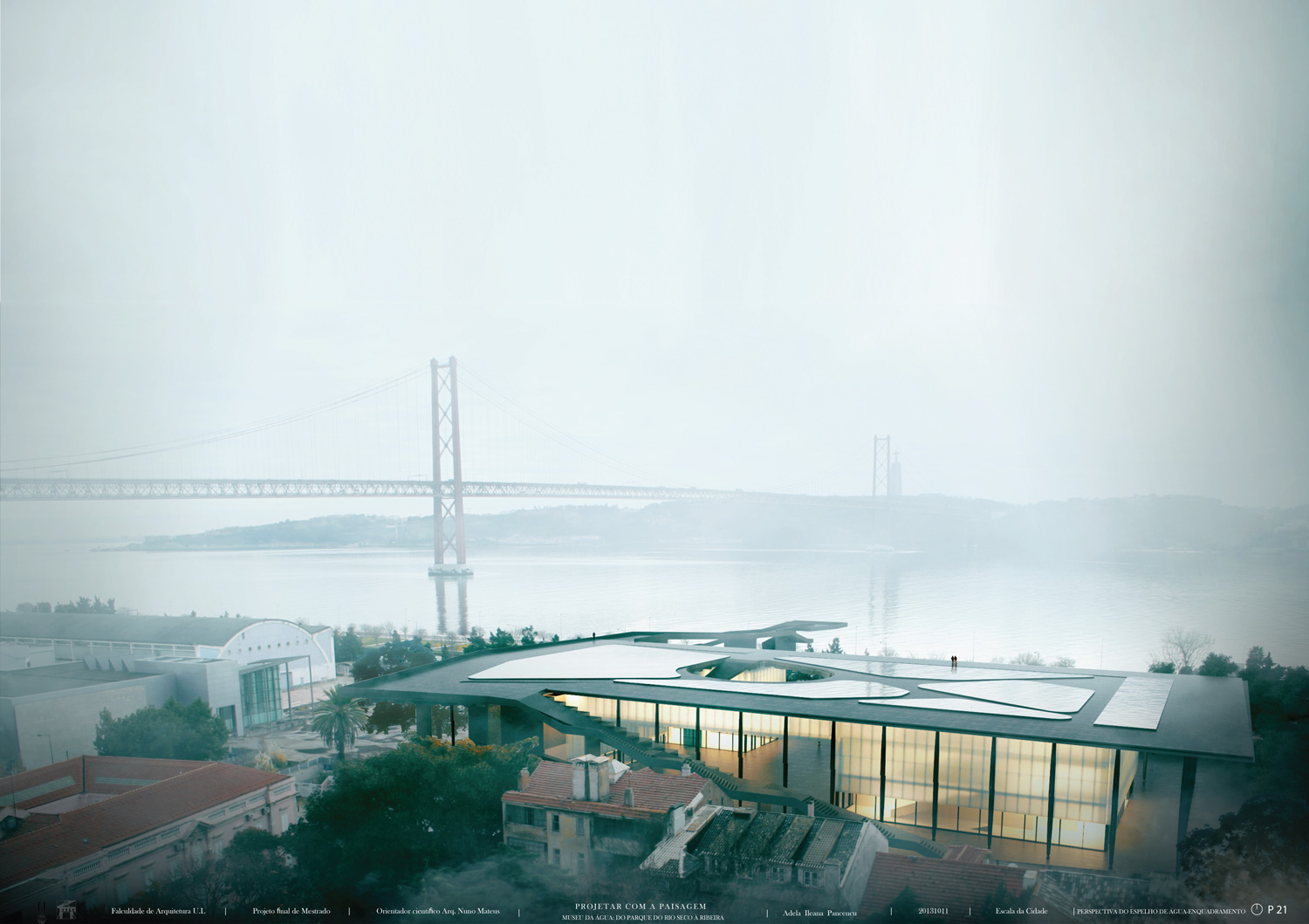☉ Water museum : from Rio Seco Parque towards Tagus River is an academic project by Adela Pancencu developed in 2016. It is located in Lisboa Portugal in a seaside and urban setting. Its scale is large. Key materials are concrete, glass and metal.
In the contemporary city, with a larger and increasingly mechanized density, a new process of redefinition and urban design of the waterfront has started, according to the needs of a modern city that recognizes its identity in the river. The recovery of Rio Seco water line that characterizes this part of the city, created the premise for the development of this work.
Localized in Lisbon’ riverfront, in itself an effective sign of the gradual conquest of the city to the river, this project claims a redefinition of the city’s image. Working on this border, between land and water, the purpose of the project is that of a regeneration approach to the territory and aims at its transformation, reflecting and exploring the built environment through the creation of a new public space destined to be more than a museum – that is, instead, a place of “memory”.
Addressing the project as a way of engaging various and newly urban and iconic relationships within the “ribeira” (a Portuguese word meaning “waterfront” which has its own urbanistic methodologic value and significance), it is meant to push known boundaries and to (re) establish the city’s relationship with the seascape, the river, and encouraging it and positing it as a dynamic element of day to day life and with everlasting value – but not just as an object of exception.
